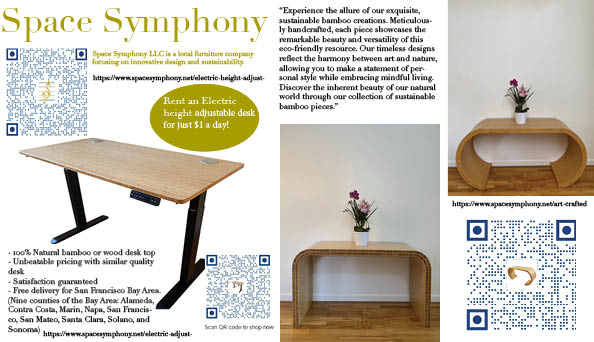
Growing up in the Bay Area, I have submerged myself into vastly different traditions. I have participated in my friends’ Hanukkah dinners, Swedish glogg parties, Christmas “Secret Santa” games and Diwali celebrations. When I first heard the term “cultural appropriation” without fully understanding the definition, I reflected back on my own life and anxiously wondered if these events had been innocuous exposures to different cultures or if I had been unknowingly appropriating cultures since my elementary school years. In reality, I had simply celebrated these festivities alongside my friends. It’s appropriate to experience other cultures, as long as individuals maintain and recognize the meaning to ethnic and racial groups.
Recently at Yale University, the Intercultural Affairs Council reminded students to stay sensitive of other cultures when choosing Halloween costumes in preparation for the holiday. Erika Christakis, a residential college associate master, ignited an uproar when she replied to this reminder asking, “Is there no room anymore for a child or young person to be a little bit obnoxious … a little bit inappropriate or provocative or, yes, offensive?” She elaborated on her own experience, saying, “When I lived in Bangladesh, I bought a sari because it was beautiful, even though I looked stupid in it and never wore it once. Am I fetishizing and appropriating others’ cultural experiences? Probably. But I really, really like them too.”
Christakis demonstrated exactly what Yale’s Intercultural Affairs Council wanted to avoid. Although she recognizes her insensitivity in the email, her tone indicates little remorse because she focused on the aesthetic appeal of the sari without regard to its practical or symbolic value to the Bangladeshi. Her remarks veered into the dangerous and offensive area of appropriation.
The immediate student body reaction to Christaki’s email was visceral, and many demanded her resignation. While onlookers may view this as an overreaction, Yale student Aaron Lewis wrote that trivial Halloween costumes were not the basis of the students’ protests, but rather the prolonged failure of Yale administration to combat racism on campus.
Without a doubt, the issue of racial discrimination is and has been prevalent at many universities throughout the United States, notably including the University of Missouri, where there were race-inspired death threats. Clearly, it is unacceptable for students and faculty to perpetuate others’ discomfort through racist remarks or actions. Despite disagreeing with Christakis’s overarching message, her email made me think about the expansive gray area between inappropriate exploitations of other cultures and the opportunity to explore various cultures to expand one’s own perspective.
One of my first introductions to the term “cultural appropriation” was through actress Amandla Stenberg, who created a video to promote awareness of the issue in African-American culture. Stenberg addresses the exploitation of cornrows, a practical hairstyle for African-Americans that has become a fundamental component of their identity. As hip-hop, another part of African-American culture, became increasingly popular, many African-Americans’ cultural markers became adopted by a wider, predominantly white, society. Soon, celebrities and models of Caucasian descent sported the hairstyle, and transitively, African-American culture became a trend, one that exists even at our own school. Before Spirit Week during the theme selection process, many students viewed a nominated Spirit Week theme of “Gold Chains“ as marginalizing a minority.
But should Eminem and Iggy Azalea not rap simply because they aren’t African-American? If imitation is the sincerest form of flattery, why is there such a loud uproar in defiance of these actions?
The broader issue is not necessarily that people are experimenting with different cultures, but rather that gestures can often be interpreted as an ignorance of the symbolic significance to a distinct group of people.
The United States is supposed to be a cultural melting pot; sharing ways of life is an integral foundation of American culture itself. Jazz music, considered a classic American music genre, epitomizes the consolidation of many cultures. It originated in New Orleans and has roots from all over the world, ranging from French and Italian opera to Caribbean and Mexican music. If this form of cultural diffusion had been mislabeled as cultural appropriation at that time, it could have hindered the growth of this treasured part of American culture.
Yes, it is inappropriate to stereotype and trivialize ways of life. Furthermore, it is unacceptable to claim ownership over another culture’s aspects.
However, upon understanding the backstories, it should be acceptable to celebrate alongside others. Sharing cultures is essential to expanding an individual’s perspectives. Instead of quickly adopting the new trend and remaining oblivious to its historic meaning, celebrate and learn the significance of others’ racial or religious celebrations and practices. Embracing and adapting a component of another’s culture based on a personal agreement with its baseline sentiments should not be reprimanded or branded as cultural appropriation. I can celebrate the Christmas spirit with my friends to evoke joy and generosity in myself and others.
Racial tensions are and will continue to be the forefront struggle of civil rights. As society continues to evolve and change, cultural appropriation can be avoided through cultural education, either self-imposed or in school, and the conscious decision to embrace these cultures rather than to exploit them.



Lilly • Dec 6, 2023 at 8:44 pm
Hi! I like it. Thanks for making it!